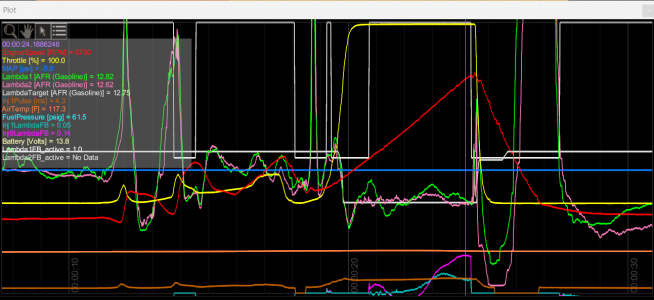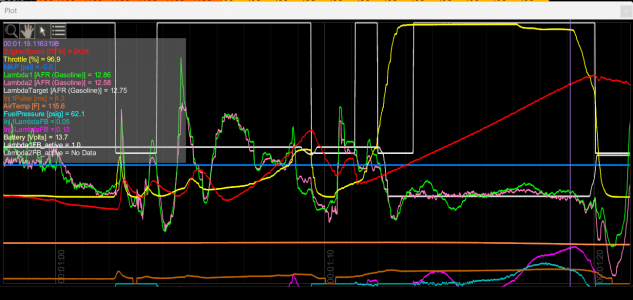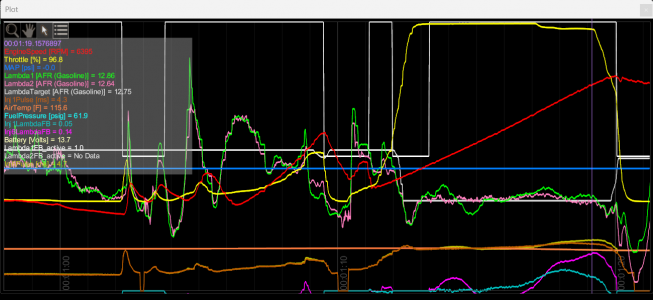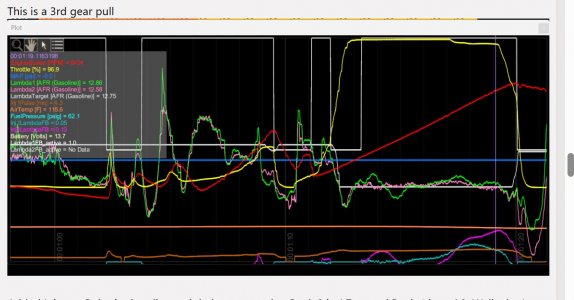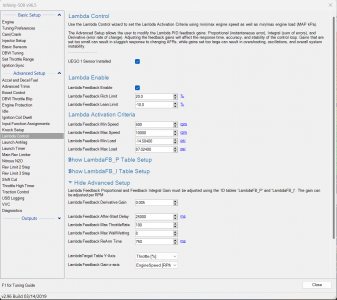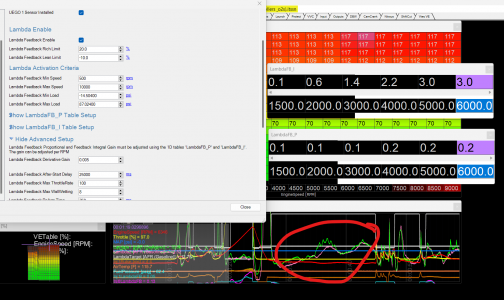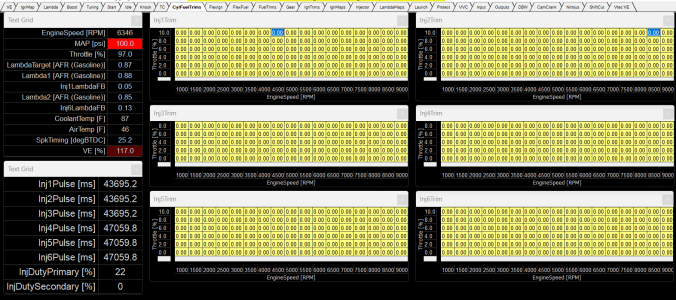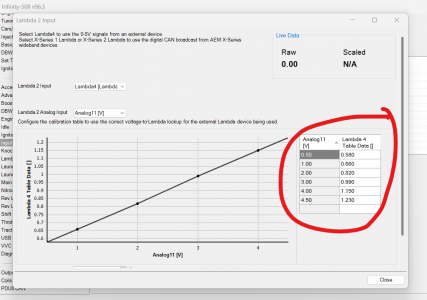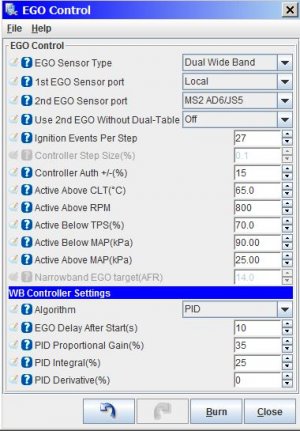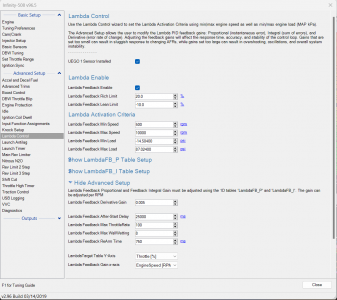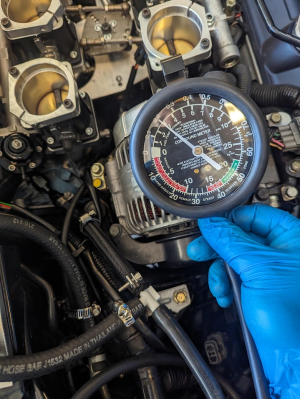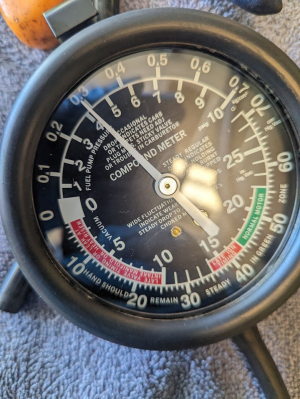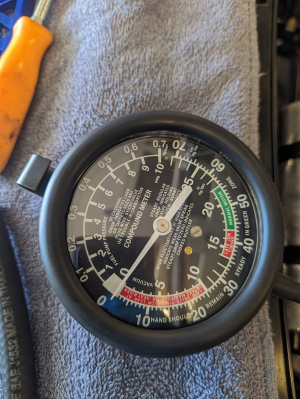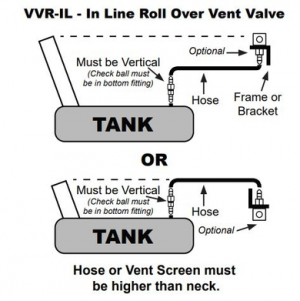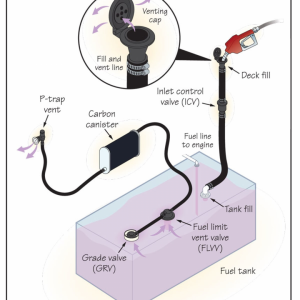Yes, it's become a less priority problem. As long as injector duty can adequately keep up when it's at WOT in VTEC i'm not going to worry about it for now.I think it is good that you are no longer so hung up on the fuel pressure question. That is a good approach as long as the fuel pressure is on target at high load.
Yes, exactly. The pink is the front bank (Bank 2 - cyl 456)) AFR. I have no clue why it doesn't scale on top of the green line which is the rear bank (Bank 1) AFR. It's purely just the graphing and scaling. The actual AFR readings on the legend on the left is showing the correct numbers.I need some clarification about the data log. First off, I see two pink / purple lines and they are rather similar. I assume the top pink line is Lambda 2 and the bottom pink-purple line is the fuel correction?
Yes, the fuchsia line is the amount of correction from the baseline tune Danny @ Unrivaled Tuning put in as a starting point.
Yes, this is a % adder in the VE table. So the 0.14 number in Inj6LambdaFB is adding 14% more fuel in the front bank at that point in the map to achieve the 12.7 AFR.What are the units for the LambdaFB? You seem to be assuming %; but, could it be a ms adder?
I'm use to pulse width tuning also with my HKS. Granted i'm a hack tuner so i'm sure I understand much less than I think I do. With that said, i'm not sure I found a injector pulse width data logging parameter. I'll have to ask Danny.0.14ms added to 4.3 ms would only be a 3.2% correction. It would be useful to display the injector pulse widths for both the front and rear banks. If your logging software auto scales see if you can change the scaling parameters so that
We had tried 3 different baseline fuel pressure settings. 60psi was were we had left it at 9pm at night and called it quits. It's been at 60psi since the current tune is based on it. This is why i'm hesitant to put the stock FPR back in. I'd have to redo the base VE table tuning and introduce yet another moving target which I decided not to do right now. If I decide to buy a new FPR i'll have to set it as close to where it is at right now and I won't change it back to say 40psi (which is where I want to be) until the next dyno visit.What is that fuel pressure measurement? Is there a scaling problem because 61.7 is well above the target of 40 psi.
WOT is currently set to Closed Loop on both banks. Edit: See below.The AFRs measurements confuse me. During the wide open throttle run the target AFR is 12.75. During the run Lambda 2 is mind buggeringly well behaved, almost like it was painted on the screen at 12.7. If you are running open loop at wide open throttle and bank 2 is measuring 12.7 with a target of 12.75 you have essentially no O2 error. I would be incredibly happy if my open loop AFR remained so close to target. Or are you running closed loop? Lambda 1 is bouncing around a lot more during the wide open throttle run and is more like what I am used to seeing.
Here is a rescaled graph.
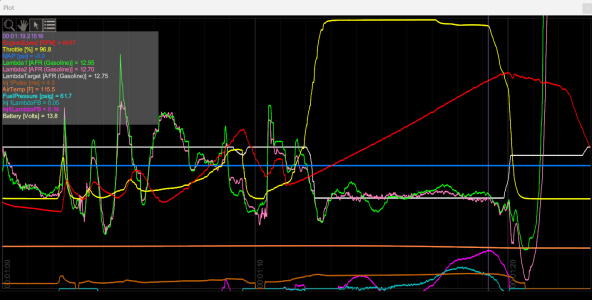
It's my understanding that the AFR is that "good" because of the correction applied. I'm not sure if this is truly the case though. It seems that the ECU can't be that good. This is where my lack of experience shows.The Inj6LambdaFB values are moving around during the wide open throttle run which adds to my confusion for 2 reasons
- are you running open loop and Inj6LambdaFB is just the calculated correction; but, is not being applied? If so your AFR is so close to target I don't know why there is any calculated correction because Lambda2 AFR is pretty much on target
This is a good point. As mentioned above, i'm not 100% certain if the AFR is that good because of the applied Inj6FB correction.- are you running closed loop and Inj6LambdaFB is being applied to correct the AFR? If so, the Inj6LambdaFB value is moving around during the run. You need some error to generate a correction and normally I would expect to see some deviation in the AFR before the correction occurs. It may be a scaling problem; but, I don't see any errors in the AFR that would trigger that correction.
I noticed something interesting below. Since you asked me a good question if LambdaFB 1 vs 2 could be active or not. So I brought those into the graph. 0 = Inactive, 1 = Active. Bank 1 is Active but Bank 2 shows no data. I believe this is due to "Lambda2FB_active" was simply not setup to log during this run. I'll have to run this log again to be sure. I'm going to ask Danny about this now.
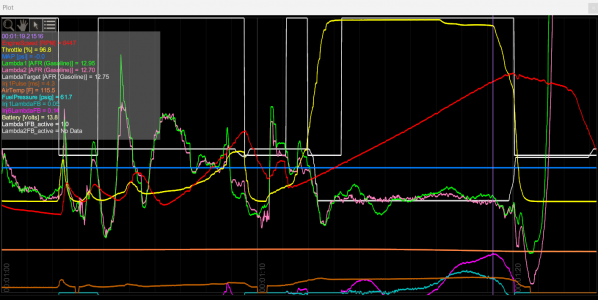
Great questions from you and @bogle. Thanks guys. It really helps.





